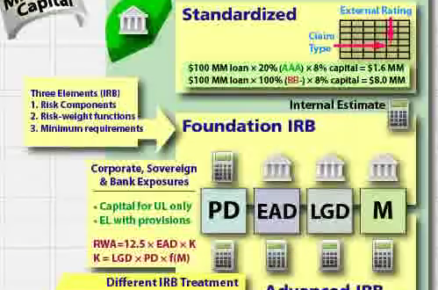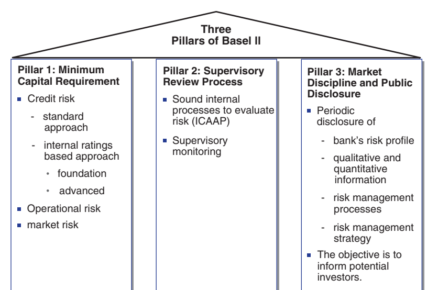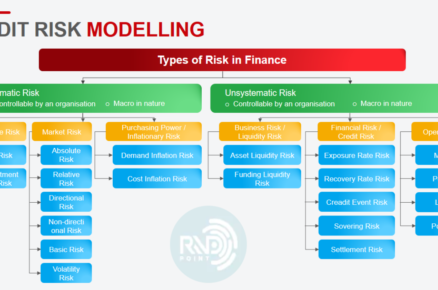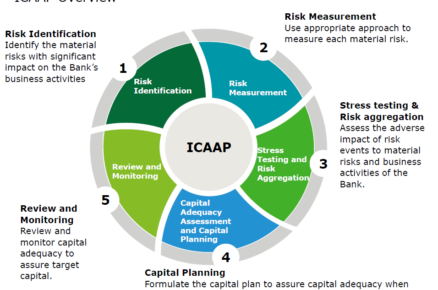BALANCE SHEET of COMMERCIAL BANK
-> Record all Asset & Liabilities & Capital
-> MUST balance where: ASSET = LIABILITIES + CAPITAL
|
Asset |
Liabilities |
|
A1. Cash A4. Short term investment A5. Long term investment (e.g. bonds, listed equities, derivatives) A6. LOAN A7. Fixed Assets |
L1. Deposit L2. Short Term Borrowing L3. Long Term Borrowing CAPITAL L4. Shareholders’ funds L5. Retained Profit (Reserve) |
L3: banks issue stock/bond
L4 & L5: the bank own these to shareholders hence not an Asset of the bank. Share holder can withdraw at any times.
A3. Interbank short term lending. E.g. Customers withdraw huge fund > Bank B has not enough fund to pay > Lend overnight from interbank money market to pay to Customer first then get money from NOSTRO, Cash, sell short-term investment (bond, stock, etc.) to pay back the loan.
Case Study:
|
Bank’s activities |
Asset & Liabilities Movement |
|
1, Shareholders invest 25M (bank may send a part to NOSTRO acct to ear Interest Profit, in this example, to keep it sample, only record to Cash) |
L4= 25 A1= 25 A=L=25 |
|
2, Lend 20M to Loan & Mortgage |
A1=5 / A6=20 |
|
3, Invest 1M in IT system |
A1=4 / A7=1 |
|
4, Customers deposit 25M to their TD & DD accounts |
L1=25 A1=29 A=L=50 |
|
5, Buy 10M short-term government bonds & Lend 5M to interbank money market |
A1=14 / A3=5 / A4=10 |
|
6, Earn profit 20M from interest of government bonds |
L5=20 A1=34 A=L=70 |
|
7, Borrow 50M from money market to buy 5 buildings |
L2=50M A7=51M A=L=120 |
|
8, Customers withdraw 10M from their deposit account. Any from A1-A4 can be used to pay the fund to customers (these short-term and |
L1=15 A1=24 A=L=110 |
|
9, Issue corporate bond to raise long term finance 16M |
L3=16 A1=40 A=L=126 |
|
10, Buy 5M of share as a long-term invest And lend to some potential startup company 30M |
A1=5 / A5=5 / A6=50 |
|
11, 10M of mortgage default -> bank loss 10M If any loan goes bad, it need to be off the balance sheet, bank loss asset and this hit to the capital of the bank, the retained profit part is hit first. Bank needs to have enough capital to absorb the loss. |
A6=40 L5=10 A=L=116 |
|
12, if ALL the loan of the bank goes default -> all 40M of A6’s gone while bank’s capital is only 35 (Shareholders’ fund 25 and retained profit is 10) |
|
|
13, if ALL depositors (15M) want money back or all short-term lenders (50M) want money back too -> total 65M while high liquid assets of bank (A1-A4) only 20M -> bank doesn‘ t have enough money to pay off the short-term liabilities -> Bank fail (liquidity crisis ) |
|
1, Not enough liquid short term assets to meet short term liabilities -> BANK RUN
2, Not enough capital to offset losses in asset values (Liabilities > Assets) -> INSOLVENCY
If bank A fail, deposit of bank B at bank A can’t be paid, loan of bank A at bank C becomes default -> Systemic Risk which impact other banks. Tools to prevent bank failure: Cash Ratio, Liquidity (current) Ratio, Leverage Ratio, Capital Ratio, Reserve Requirement






